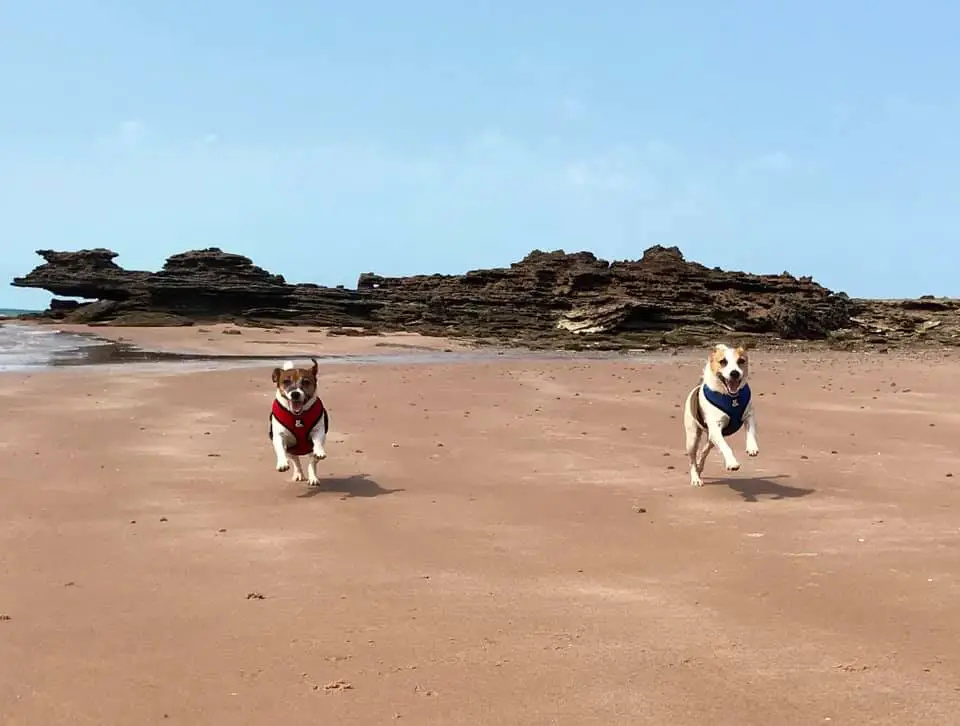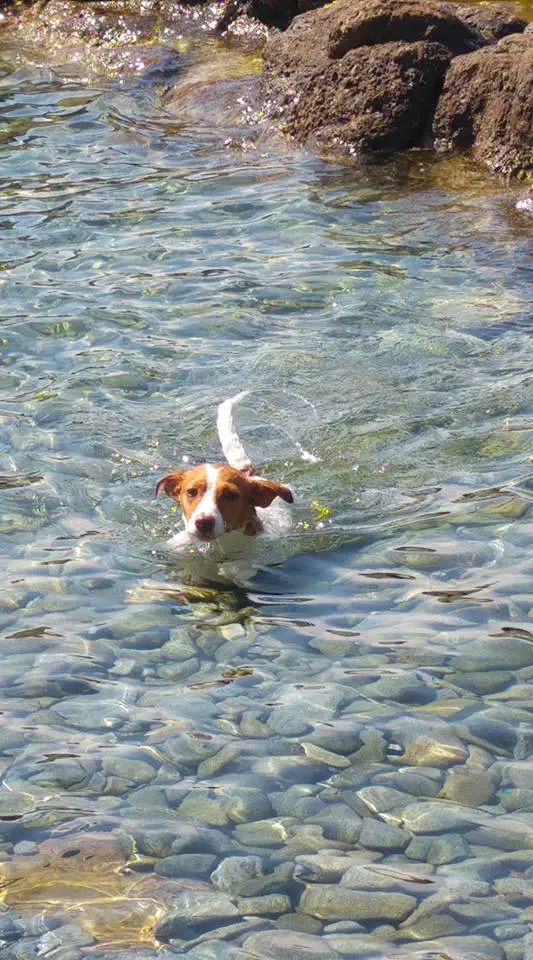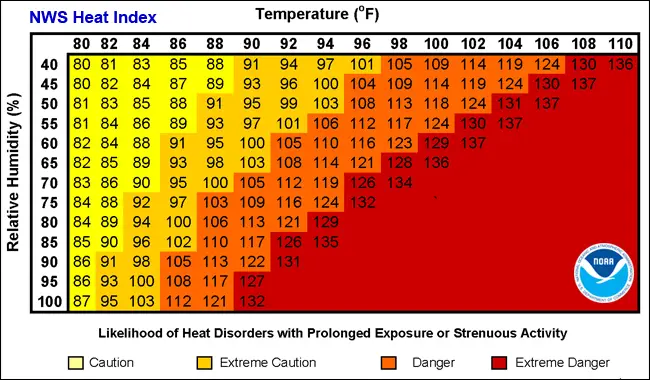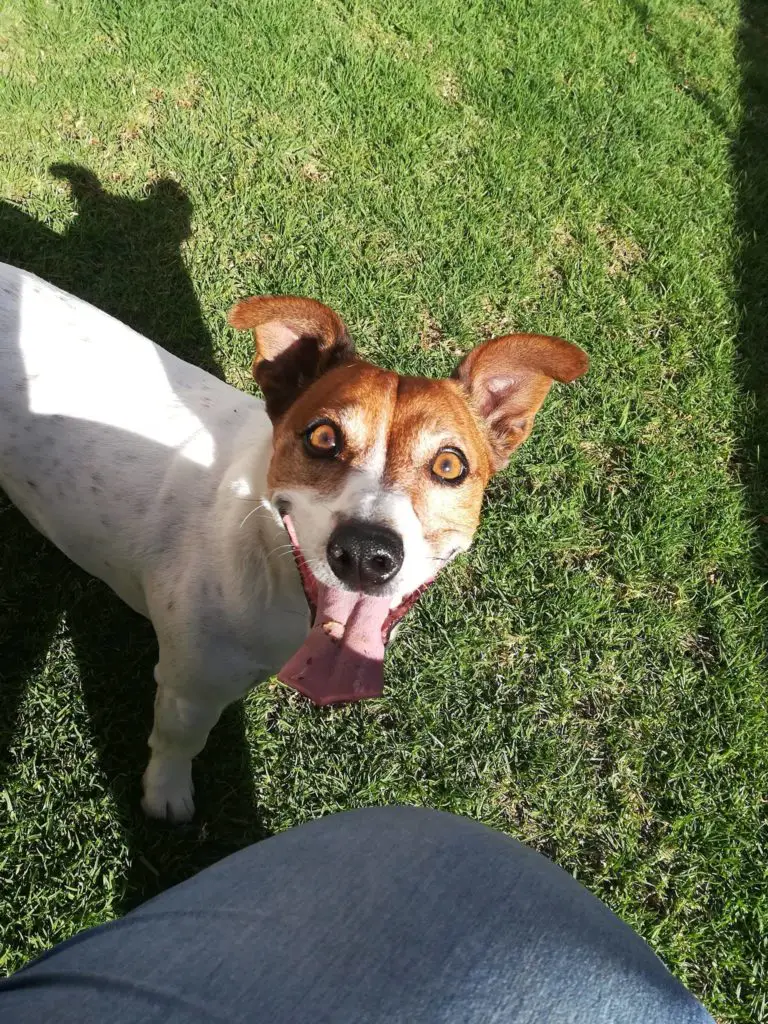Table of Contents
*This post may contain affiliate links. As an Amazon Associate we earn from qualifying purchases.
Summer is coming, and in many parts of the world, that can mean extreme temps. But never fear! If you know what to watch out for, it’s not hard to figure out how to protect your pup.
Heat protection has numerous dimensions, though. It’s not enough to simply stay out of the sun. You have to think about feet, skin, water, and humidity. Here are some helpful tips for getting through what can, in some places, be a dangerous time of year.
Foot Protection

However hot the air might be, the pavement can get up to 50 degrees Fahrenheit (10 degrees Celsius) hotter. This means that if the weather report says 77 degrees Fahrenheit (25 degrees Celsius), pavement temps might be as hot as 125 (51.7 degrees Celsius).. If that sounds extreme, it is. In fact, that’s hot enough to cause skin damage after 60 seconds of contact. Imagine how hot that pavement can get somewhere like Arizona, where the air temps can be in the 120s!
Fortunately, there are a few different kinds of paw protection on the market, to keep your pup’s tootsies safe from the heat.
Shoes
Your mind might first go to protective booties, and an internet search will turn up dozens of different designs. For heat protection, choose a bootie with a breathable upper — either sandal style or made from mesh. The sole should be thick enough to keep the heat from your pup’s precious paws.
Wax
A lot of dogs hate to wear shoes, though. If your dog is one of them, you could try paw protective wax. This has the added advantage of protecting against snow, ice, and salt, as well.
Lifestyle

However you choose to protect your pup’s paws, be on the lookout for limping, foot-licking or chewing, and visible damage to the paw pads. These can all be signs of heat damage.
Sun Protection
Just like people, dogs can suffer sunburn and skin cancer. White-coated dogs are particularly at risk.
You can lower that risk by staying out of the sun, making sure your dog has adequate, all-day shade if they have to stay outside for extended periods of time, and using sunscreen.
If you’re going to use sunscreen, use a child-safe variety with an SPF of 30 to 50. Apply it to your dog’s nose, ears, belly, and any hairless areas.

Also be on the lookout for sun damage. It doesn’t necessarily look like sunburn on a human. The first stage of sunburn may indeed look red. More severe burns, however, may look like several layers of exposed skin. With very severe burns, the skin may appear white or thickened. If you notice signs of severe sunburn, it’s important to get your dog to the vet, pronto.
Hydrate, Hydrate, Hydrate
A dog’s body is 80 percent water, and, just like us, heat and exertion cause their bodies to lose that water. Dehydration can cause heat stress and worse.

It’s important for your dog to have access to water while away from home, and especially if he or she is going to be staying outside for an extended period of time.
Heat Protection
There are different kinds of heat, and each one requires a slightly different kind of protection.
But whether your climate is dry or humid, heat stroke and heat exhaustion are real and present dangers. The symptoms of heat exhaustion, which can lead to heat stroke include panting, excessive salivation, restlessness, increased heart rate, vomiting, and diarrhea.
Be especially careful of heat if your dog is:
- Elderly
- Under six months of age
- Overweight
- Taking certain medications
- Suffering from a heart condition
- Brachycephalic (such as pugs)
Dry heat
In the desert southwest of the U.S, they have a saying: at least it’s a dry heat. A dry heat, in a lot of people’s minds is better than heat with humidity, and people in humid places might well agree. But that doesn’t mean it’s less dangerous.

It’s a good thing so many dogs love water! Water play is a great way to beat a dry heat. Just be careful of sun exposure.
Humid heat
Humidity carries its own risks. In a humid climate, temperatures can feel much hotter than they measure on a thermometer. On top of that, they can affect your body, and your dogs, as if they are actually that much hotter. Scientists describe this increasing effect as the Humidity Index. Pet Place has a great explanation here.
How do you keep your pup humidity safe?

First, keep an eye on the heat index (check out the National Weather Service description here.) If the heat index is greater than 75 (72 for at-risk breeds), keep your pets in a well-ventilated area, make sure they have plenty of fresh water, and avoid exercise.
Keep Cool!

Summer can be a lot of fun, from beaches to long, exercise-filled days outdoors. But it’s important to keep it safe as well.
What’s your favorite way to beat the heat with your JRT?
Featured Image: Public Domain by Franz Golhen, via Wikimedia Commons

